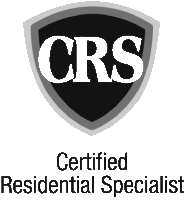
55+ communities are a great option for active adults looking to downsize and enjoy their retirement years in a safe and peaceful environment. These communities are designed with active adults age over 55+ in mind, from the amenities to the location. The types of homes in 55+ communities are typically smaller, such as apartments, condos and townhouses.
One of the biggest perks of living in a 55+ community is the cost of living. Buying a retirement home in a 55+ community can be a more affordable option with an average cost of $1,500 - $4,000 per month, compared to the average monthly mortgage payment in the United States of $1,595.
Another pro of living in a 55+ community is the location. These communities can be found almost anywhere in the United States, but are often in areas that see the sun all year round, like Arizona and Florida. These communities are also often strategically placed near quality medical facilities.
Safety and security are also a big advantage of 55+ communities as they are typically gated and in areas with low crime rates. Guests of residents usually will need to be approved by those living in the communities.
Property taxes tend to be lower in active adult communities, as these communities aren't in dire need of supporting school funding and after-school programs like other residential neighborhoods are.
55+ communities also offer a wide range of amenities to keep residents active and engaged, such as sports courts, fitness centers, golf courses, dining areas, classes, social events, dog parks, and art rooms. Plus, home and community maintenance is usually taken care of, including home and landscape maintenance.
The peaceful serenity of 55+ communities is also a huge plus, as these communities are typically quieter compared to residential neighborhoods with families that have younger children.
However, there are also some cons to consider. Homeowners associations (HOAs) can be a source of problems and unexpected added dues. Before purchasing a property in a 55+ community, it is important to research the health of the HOA in the retirement community you're considering.
Another con is the lack of age diversity in these communities, as most people that live in 55+ communities are above the age of 55. If you're looking to be amongst varied age groups, you may want to consider living in a neighborhood instead.
Lastly, 55+ communities do not typically offer health care services or assisted living care as part of the monthly HOA fee. However, they may provide transportation to medical services and shopping.
Overall, 55+ communities are a great option for active adults looking to downsize, connect with others in their age range, and enjoy a wide range of amenities while living in a safe and peaceful environment. It is important to research the community and the HOA before committing to a move.
If the listings above don't load, try allowing third party cookies or view listings here.








